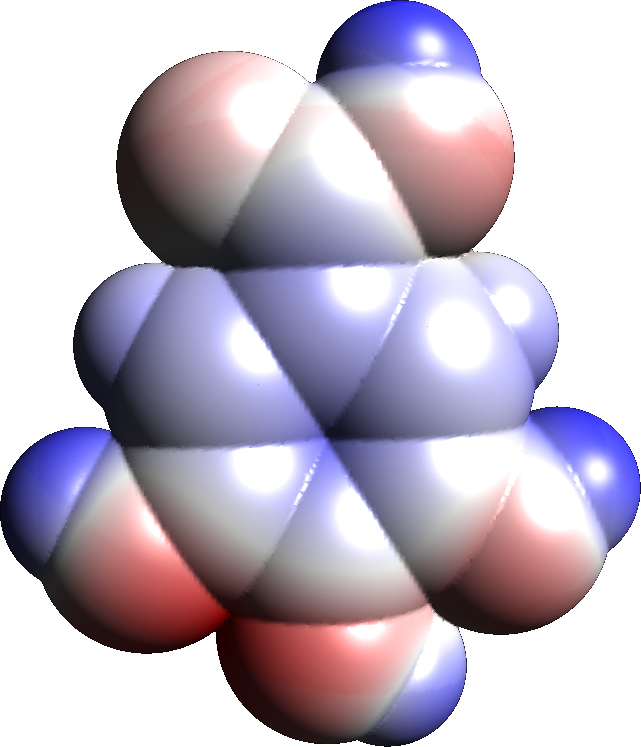|
Mallojaponin
Mallojaponin is a hydrolysable tannin found in the bark of ''Mallotus japonicus''. This compound contains the moiety elaeocarpusinic acid, an oxidized hexahydroxydiphenic acid group (dehydrohexahydroxydiphenic acid or DHHDP) which reacted with a dehydroascorbic acid molecule. It also contains a valoneic acid and a gallic acid Gallic acid (also known as 3,4,5-trihydroxybenzoic acid) is a trihydroxybenzoic acid with the formula C6 H2( OH)3CO2H. It is classified as a phenolic acid. It is found in gallnuts, sumac, witch hazel, tea leaves, oak bark, and other plants. It i ... moieties linked to a glucose molecule. References Ellagitannins {{aromatic-stub ... [...More Info...] [...Related Items...] OR: [Wikipedia] [Google] [Baidu] |
Valoneic Acid
Valoneic acid is a hydrolysable tannin. It is a component of some hydrolysable tannins such as mallojaponin. The difference with its isomer sanguisorbic acid is that the hydroxyl that links the hexahydroxydiphenoyl (HHDP) group to the galloyl group belongs to the HHDP group. It can be chemically synthesized.Enantioselective synthesis of valoneic acid derivative. Hitoshi Abe, Yusuke Sahara, Yuki Matsuzaki, Yasuo Takeuchi and Takashi Harayama, Tetrahedron Letters, Volume 49, Issue 4, 21 January 2008, pp. 605-609, See also * Sanguisorbic acid * Valonea (''Quercus macrolepis'') * Valoneic acid dilactone References External links Plant polyphenols: vegetable tannins revisited, page 136by Edwin Haslam Edwin Haslam (1932 – 3 October 2013) [...More Info...] [...Related Items...] OR: [Wikipedia] [Google] [Baidu] |
Mallotus Japonicus
''Mallotus japonicus'' (), also known as East Asian mallotus, the food wrapper plant or "Akamegashiwa" in Japanese, is a plant species in the genus ''Mallotus'' native to China. It is also found in Japan and Korea. This species was first described in 1865, its name was verified by AAS Systematic Botanists on October 2, 2015. The plant is dioecious. The young shoots are red-coloured. The larvae of the moth '' Deoptilia heptadeta'' mine the leaves to feed. Uses The large leaves were used to wrap food. The young leaves, when boiled, are edible. The bark is used in the Japanese pharmacopoeia as a decoction against gastric ulcer, duodenal ulcer, gastric hyperacidity. In addition, the fruit has anthelmintic properties. Ecology ''Mallotus japonicus'' shows physical, chemical, and biotic resistance traits against herbivores. Trichomes, which are produced on leaf surfaces, serve as a physical resistance trait. Pellucid dots, which also are present on leaf surfaces, typically conta ... [...More Info...] [...Related Items...] OR: [Wikipedia] [Google] [Baidu] |
Valoneic Acid
Valoneic acid is a hydrolysable tannin. It is a component of some hydrolysable tannins such as mallojaponin. The difference with its isomer sanguisorbic acid is that the hydroxyl that links the hexahydroxydiphenoyl (HHDP) group to the galloyl group belongs to the HHDP group. It can be chemically synthesized.Enantioselective synthesis of valoneic acid derivative. Hitoshi Abe, Yusuke Sahara, Yuki Matsuzaki, Yasuo Takeuchi and Takashi Harayama, Tetrahedron Letters, Volume 49, Issue 4, 21 January 2008, pp. 605-609, See also * Sanguisorbic acid * Valonea (''Quercus macrolepis'') * Valoneic acid dilactone References External links Plant polyphenols: vegetable tannins revisited, page 136by Edwin Haslam Edwin Haslam (1932 – 3 October 2013) [...More Info...] [...Related Items...] OR: [Wikipedia] [Google] [Baidu] |
Dehydrohexahydroxydiphenic Acid
Dehydrohexahydroxydiphenic acid is a group found in dehydroellagitannins. It is formed from hexahydroxydiphenic acid (HHDP) through oxidation of the plant hydrolysable tannins.Correlation of oxidative transformations of hydrolyzable tannins and plant evolution. Takashi Yoshida and Tsutomu Hatano, Phytochemistry, November 2000, Volume 55, Issue 6, Pages 513–529, It is found in ellagitannins such as euphorbin A, geraniin or mallotusinic acid. In geraniin, it is forming an equilibrium mixture of six-membered hemi-ketal and five-membered hemi-ketal forms. References Ellagitannins Carboxylic acids Heterocyclic compounds with 3 rings Oxygen heterocycles {{aromatic-stub ... [...More Info...] [...Related Items...] OR: [Wikipedia] [Google] [Baidu] |
Dehydroascorbic Acid
Dehydroascorbic acid (DHA) is an oxidized form of ascorbic acid (vitamin C). It is actively imported into the endoplasmic reticulum of cells via glucose transporters. It is trapped therein by reduction back to ascorbate by glutathione and other thiols. The (free) chemical radical semidehydroascorbic acid (SDA) also belongs to the group of oxidized ascorbic acids. Structure and physiology Top: ascorbic acid(reduced form of vitamin C)Bottom: dehydroascorbic acid( nominal oxidized form of vitamin C) Although a sodium-dependent transporter for vitamin C exists, it is present mainly in specialized cells, whereas the glucose transporters, the most notable being GLUT1, transport Vitamin C (in its oxidized form, DHA) in most cells, where recycling back to ascorbate generates the necessary enzyme cofactor and intracellular antioxidant, (see Transport to mitochondria). The structure shown here for DHA is the commonly shown textbook structure. This 1,2,3-tricarbonyl is too electrop ... [...More Info...] [...Related Items...] OR: [Wikipedia] [Google] [Baidu] |
Gallic Acid
Gallic acid (also known as 3,4,5-trihydroxybenzoic acid) is a trihydroxybenzoic acid with the formula C6 H2( OH)3CO2H. It is classified as a phenolic acid. It is found in gallnuts, sumac, witch hazel, tea leaves, oak bark, and other plants. It is a white solid, although samples are typically brown owing to partial oxidation. Salts and esters of gallic acid are termed "gallates". Isolation and derivatives Gallic acid is easily freed from gallotannins by acidic or alkaline hydrolysis. When heated with concentrated sulfuric acid, gallic acid converts to rufigallol. Hydrolyzable tannins break down on hydrolysis to give gallic acid and glucose or ellagic acid and glucose, known as gallotannins and ellagitannins, respectively. Biosynthesis Gallic acid is formed from 3-dehydroshikimate by the action of the enzyme shikimate dehydrogenase to produce 3,5-didehydroshikimate. This latter compound aromatizes. Reactions Oxidation and oxidative coupling Alkaline solutions of gallic a ... [...More Info...] [...Related Items...] OR: [Wikipedia] [Google] [Baidu] |

